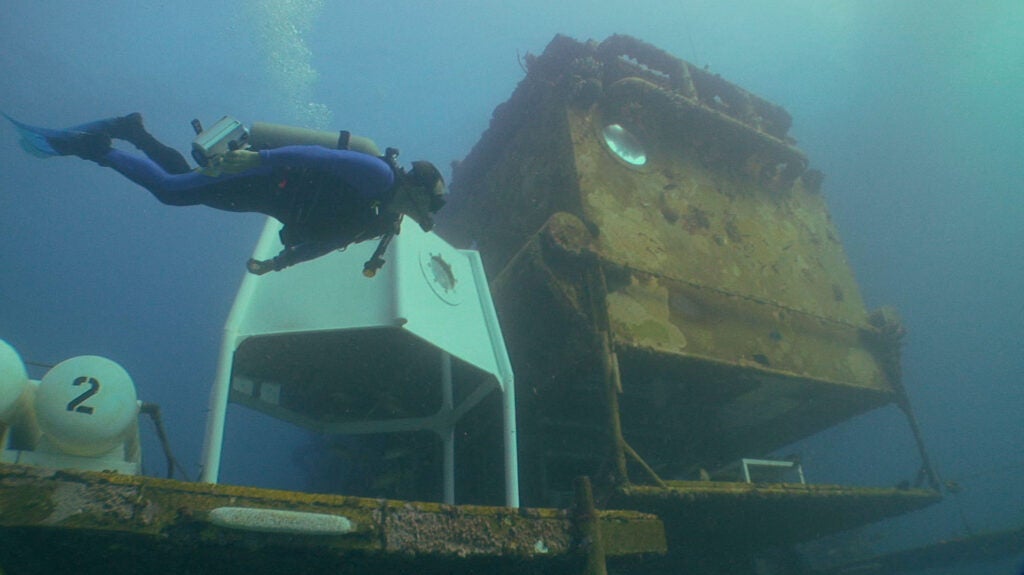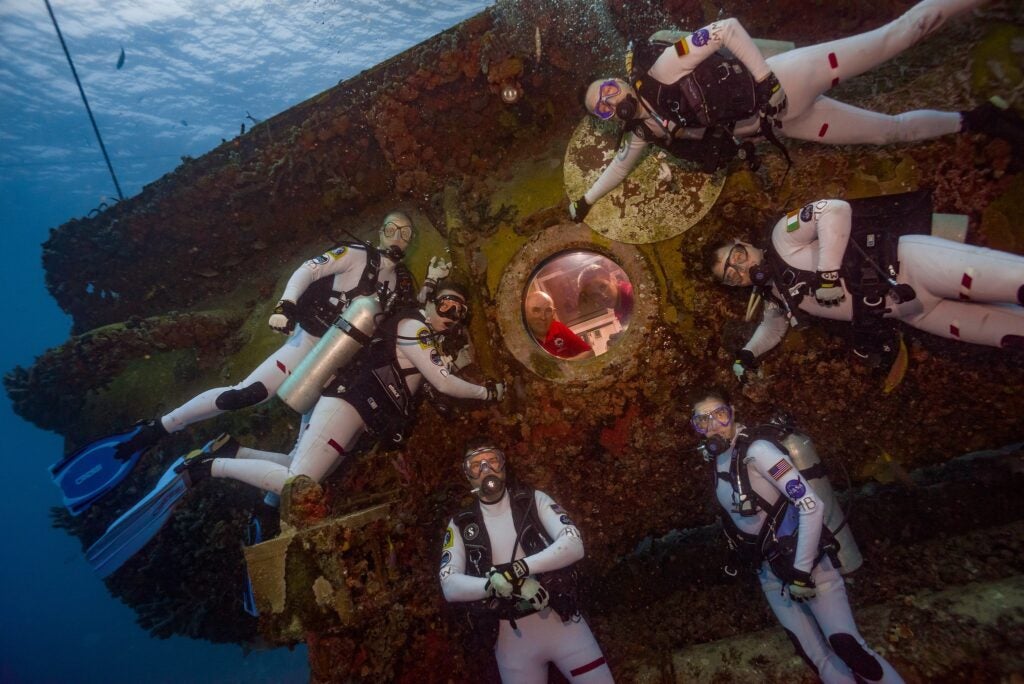Originally, Aquarius was a joint project between NOAA and the US Navy. But since it was put in place in 1986, it has been passed to Florida International University. Aquarius consists of a three-part system: a habitat containing the lab and living spaces, a life-support buoy that relays air and communications from the habitat to the shore, and 120-ton base plate that weighs the habitat down on the seafloor. Beyond its scientific instruments, the lab has networked computers, internet, phones, radios, and video-conferencing equipment.
 The Aquarius Reef Base. NOAA’s National Ocen
The Aquarius Reef Base. NOAA’s National Ocen
“An underwater lab gives us the ability to stay underwater for extended periods of time,” says Cousteau. That allows researchers to collect data around-the-clock. Plus, he adds, “You learn to saturate.”
A regular scuba diver descending to a depth of 60 feet can only stay underwater for an hour or so. Because rapid changes in pressure can cause dissolved gases in the body to form expanding bubbles that can obstruct blood flow or cause other medical issues, if they come up too quickly, it can cause what’s known as the Bends. This is also why divers have to wait up to a day after their last dive before they can get on a flight.
Saturation at depth allows the body to acclimate to the multiple atmospheres of pressure (60 feet corresponds to three atmospheres of pressure, or three times the pressure at the surface, and denizens of the facility would feel this new pressure all the time) and stay underwater for longer periods of time. When divers are ready to come up, they undergo a decompression process where the pressure around them is gradually brought back to the pressure on land so the gases can safely leave their body.
[Related: Fish sounds tell us about underwater reefs—but we need better tech to really listen]
“We dove 8 to 12 hours a day per person during the [2014 mission on Aquarius] because of the gift of time at the bottom of the sea,” Cousteau says. “We were able to do three years worth of scientific research in 31 days as opposed to a ship stationed at the surface with divers coming down.”
 Astronauts training at Aquarius Reef Base.
Astronauts training at Aquarius Reef Base.
But Aquarius is 35 years old. “It’s a dinosaur. And it’s very limited in space,” Cousteau says. “I joke with fellow New Yorkers that it’s like living in a studio apartment with five roommates.” The interior of Aquarius totals 400 sq ft and the capacity is 6 occupants. He is planning for Proteus to be around 4,000 sq ft, with room to accommodate around 12 residents.
Cousteau wants to add some new features too, like a submarine docking station or hangar, “akin to someone’s garage with a car, so that we can use that tool to go to places that are not pragmatic as aquanauts,” he says. The garage could also be used to deploy autonomous underwater vehicles that go out and collect data around the Caribbean. Then, they can come back to Proteus to get serviced and have their data downloaded.
The plan for Proteus
Like the ISS, Proteus would be modular, Cousteau hopes, which means that it could be taken apart like a Lego set and reassembled with upgraded tech components as time goes on. (Although unlike the ISS, it would not be a sealed facility.)
“We will be able to keep up with future demands, with technologies that continue to evolve,” Cousteau says. “You can continue to upgrade the internal infrastructure as well as some of the external superstructures.”
Curaçao is on a seamount. The underwater topography has an average slope of 45 degrees. If the location is just right, it could offer Proteus easy access to a wide range of ecosystems, spanning from coral reefs to the top of the twilight zone. “We want a place that’s conducive to research but engineering-wise, is not too complicated. And we want to be in close proximity to where mission control will be,” says Cousteau. “We are working with the government of Curaçao and Carmabi, the manager of the marine protected area, to be able to pinpoint the location.”


You must be logged in to post a comment.